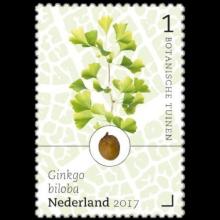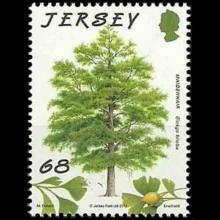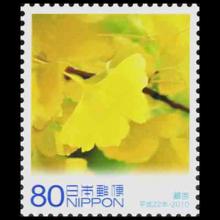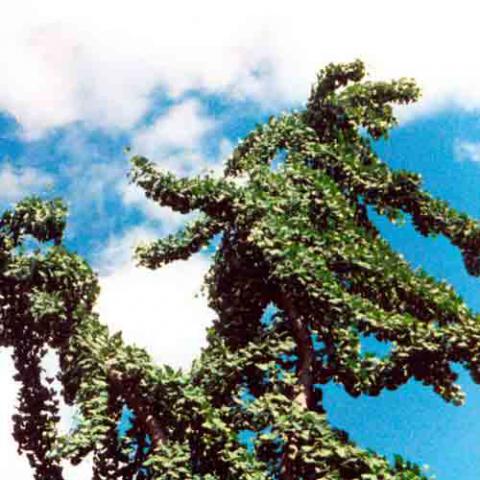NAME(S)
TAXONOMY
PLANTAE ID
THERAPEUTIC
Netherlands
Issued:
Stamp:
Ginkgo biloba
Jersey
Issued:
Stamp:
Ginkgo biloba
Japan
Issued:
Stamp:
Ginkgo biloba
Netherlands
Issued:
Stamp:
Ginkgo biloba
Jersey
Issued:
Stamp:
Ginkgo biloba
Japan
Issued:
Stamp:
Ginkgo biloba
Netherlands
Issued:
Stamp:
Ginkgo biloba
Jersey
Issued:
Stamp:
Ginkgo biloba
Japan
Issued:
Stamp:
Ginkgo biloba
1,400-YO Ginkgo Tree Near Ancient Chinese Temple Sheds Leaves, Creates A Sea Of 'Golden' Leaves
Aishwarya Dharni, Updated on Oct 11, 2020
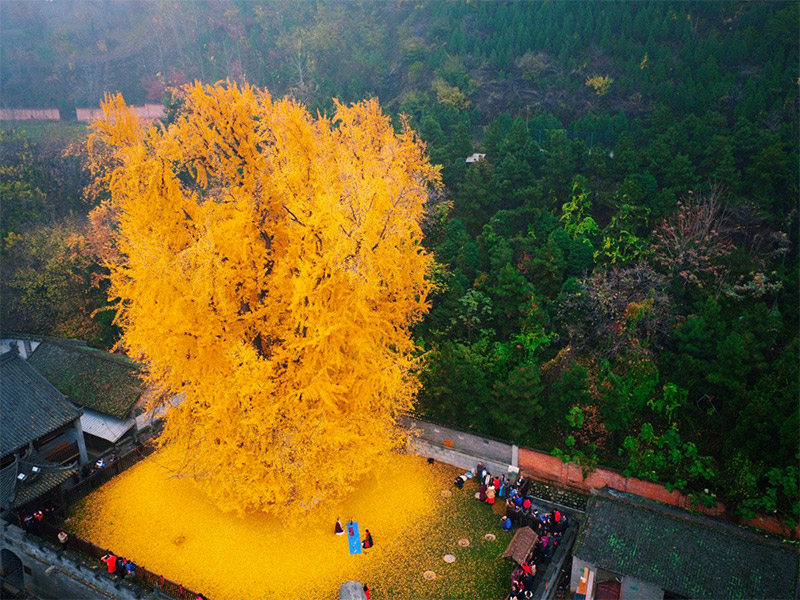
Ginkgo biloba, commonly known as ginkgo or gingko, is the only living species in the division Ginkgophyta, all others being extinct. Also known as the maidenhair tree, the species it belongs to is really old with some fossils dating back 270 million years.
It is regarded as producing the best golden fall colour. Also called, 'Autumn Gold', the trees' leaves are broad and fan-shaped. They add visual interest and beauty to the landscape by turning into a beautiful deep yellow in the fall.
Twitter user @ThamKhaiMeng posted spectacular photographs of a 1,400-year-old ginkgo tree shedding its gold-like leaves. He credited the pictures to Han Fei.
In the unique images, it looks like the tree is surrounded by gold since its leaves turn into a beautiful golden-yellowish colour. The post has more than 1,000 retweets and over 7,000 likes. If you are looking for an amazing wallpaper for your laptop, or phone, these pictures are definitely worth your time.
People took to the comments section to express how impressed they were with the beauty of the tree as well as the timing of the photographs. While some joked about allergies during fall season, others were just simply mind-blown.
Reference: indiatimes
Genus species (Plantaae): Ginkgo biloba
Ginkgo biloba, commonly known as ginkgo or gingko (both pronounced /ˈɡɪŋkoʊ/), also known as the maidenhair tree. It is a very old species, with some fossils dating back 270 million years. Native to China, the tree is widely cultivated, and was cultivated early in human history. It has various uses in traditional medicine and as a source of food.
Description
Ginkgos are large trees, normally reaching a height of 20–35 m (66–115 ft), with some specimens in China being over 50 m (160 ft). The tree has an angular crown and long, somewhat erratic branches, and is usually deep rooted and resistant to wind and snow damage. Young trees are often tall and slender, and sparsely branched; the crown becomes broader as the tree ages. During autumn, the leaves turn a bright yellow, then fall, sometimes within a short space of time (one to 15 days). A combination of resistance to disease, insect-resistant wood and the ability to form aerial roots and sprouts makes ginkgos long-lived, with some specimens claimed to be more than 2,500 years old.
Ginkgo is a relatively shade-intolerant species that (at least in cultivation) grows best in environments that are well-watered and well-drained. The species shows a preference for disturbed sites; in the "semiwild" stands at Tianmu Mountains, many specimens are found along stream banks, rocky slopes, and cliff edges. Accordingly, ginkgo retains a prodigious capacity for vegetative growth. It is capable of sprouting from embedded buds near the base of the trunk (lignotubers, or basal chichi) in response to disturbances, such as soil erosion. Old individuals are also capable of producing aerial roots on the undersides of large branches in response to disturbances such as crown damage; these roots can lead to successful clonal reproduction upon contacting the soil. These strategies are evidently important in the persistence of ginkgo; in a survey of the "semiwild" stands remaining in Tianmushan, 40% of the specimens surveyed were multistemmed, and few saplings were present.
Leaves
The leaves are unique among seed plants, being fan-shaped with veins radiating out into the leaf blade, sometimes bifurcating (splitting), but never anastomosing to form a network. Two veins enter the leaf blade at the base and fork repeatedly in two; this is known as dichotomous venation. The leaves are usually 5–10 cm (2.0–3.9 in), but sometimes up to 15 cm (5.9 in) long. The old popular name "maidenhair tree" is because the leaves resemble some of the pinnae of the maidenhair fern, Adiantum capillus-veneris. Ginkgos are prized for their autumn foliage, which is a deep saffron yellow.
Leaves of long shoots are usually notched or lobed, but only from the outer surface, between the veins. They are borne both on the more rapidly growing branch tips, where they are alternate and spaced out, and also on the short, stubby spur shoots, where they are clustered at the tips. Leaves are green both on the top and bottom and have stomata on both sides.

